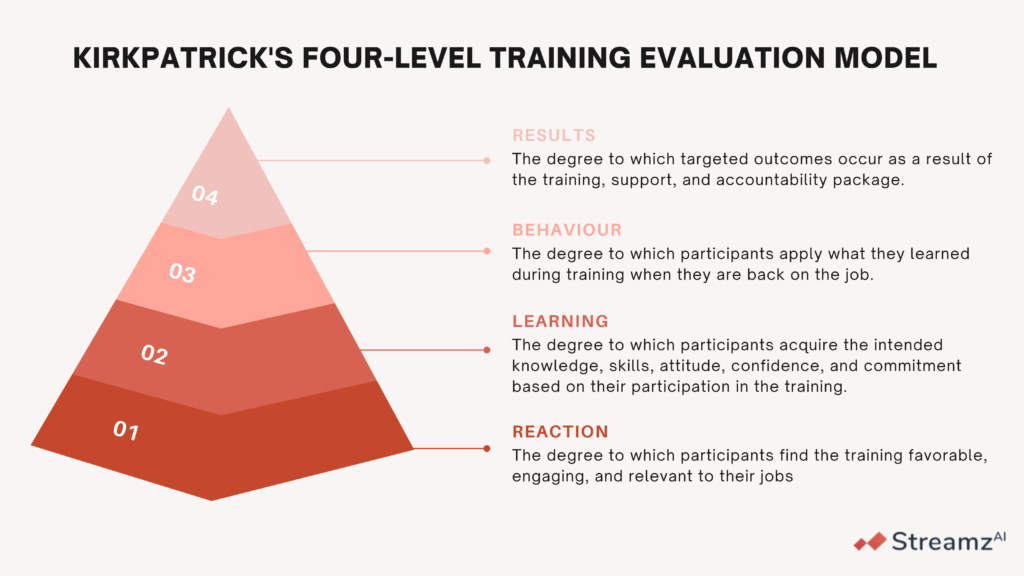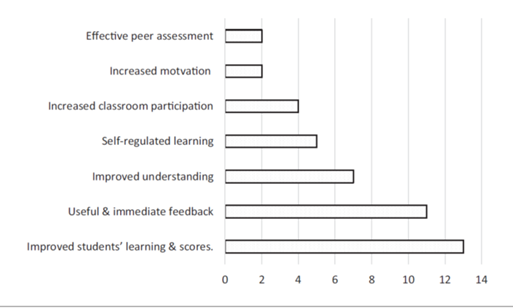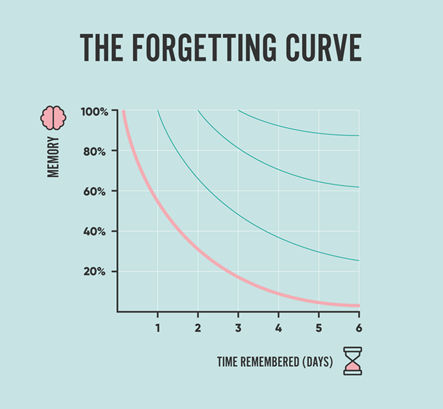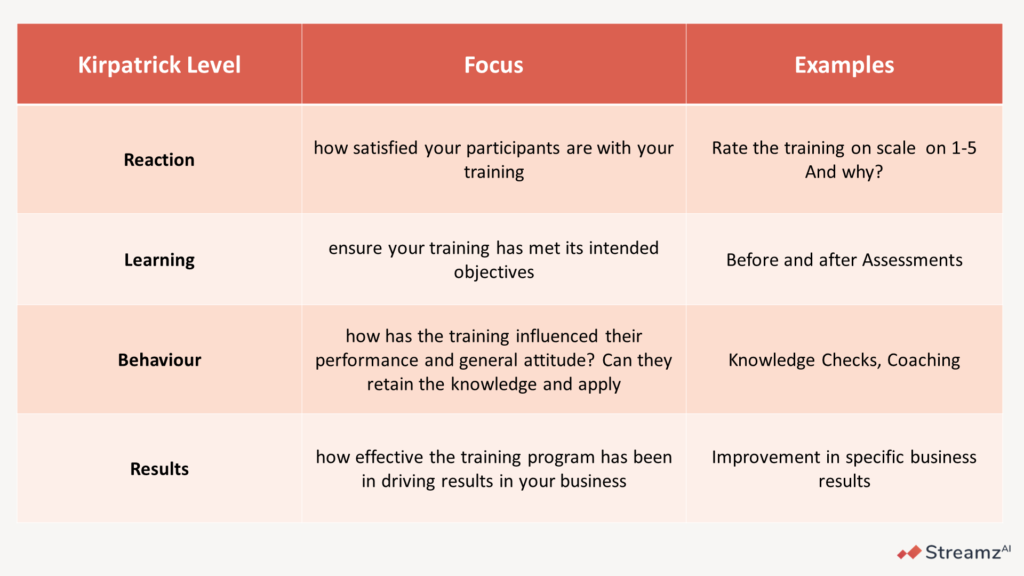Nandakumar Chari
SEPTEMBER 28, 2021
Enterprises spend over 370B$ on workplace learning and product training. Out of this, the US alone spends over $2300 per salesperson annually. New product training is a constant endeavour of product marketing teams. Additionally, sales training organizations are constantly debating whether this spending is effective. In this blog, we’ll discuss how you can improve salesperson training using the Kirkpatrick model.
Key Questions During Sales and Product Training
- Is the training improving salesperson’s skills and performance?
- Is there an underlying behaviour change?
- Can the salesperson recall, retain and use the knowledge at later dates?
- And finally, did the sales training improve business results?
So how do you make your sales training more effective? To understand and work on that area, let’s understand the basics first using the famous Kirkpatrick model.
Kirkpatrick Model for Sales Training

Kirkpatrick’s four-level sales and product training module
The Kirkpatrick Model is a globally recognized model that defines how to evaluate sales training. Designed in 1950, Kirkpatrick Model measures the effectiveness of sales and product training. It assesses both formal and informal salesperson training and evaluates them based on four criteria:
- Reaction
- Learning
- Behaviour
- Results
Level 1: Reaction
At the base level is the reaction, which focuses on how satisfied the learners are with the training. This is widely used by all trainers using basic surveys. Important indicators are participation rates, completion rates and rating of the training. In this case, spotting recurring themes is a critical challenge. For instance, identifying low-rated areas as shared by the salesperson to understand what can be done to improve the learner’s experience.
Level 2: Learn
The next level of the Kirkpatrick model is Learning. In particular, it measures whether the training has met its objective. Have the learners acquired the knowledge? Did the sales rep understand the value proposition during the product training? The best way to validate this is using summative and formative assessments. Malcolm Knowles the father of Andragogy, offered core concepts about adult learning assessments that will actually encourage adult learning in the course and in the assessment process itself.
Formative assessments focus on measuring the learning throughout the learning journey without any pressure to “pass” a test. Whereas, summative assessments focus on measuring the learning at end of the process with scores as quantified indicators. Research indicates that assessments notably improved salespeople’s learning and understanding of any concept. Furthermore, research by Dr. Will Thalheimer indicates that retrieval, feedback and repetition afforded by well-constructed assessments motivate learners to study and boost effectiveness by 40%-150%.

New Trends in Formative-Summative Evaluations for Adult Education Haifa F. Bin Mubayrik
How do you create well-constructed assessments?
Assessments have played a key role in our early school journey. However, assessments for adult learners especially sales folks need to be engaging, effective, and valuable. Following are some ideas which work:
a. Varying the type of assessments
It is abundantly clear from the research that MCQs are better than short answers in assessing knowledge. Additionally, there are other techniques that you can use- multiple answers, true or false, this or that or fill in the blanks. Furthermore, match the following, sequencing the order, and identifying hot spots in an image help assess whether the knowledge is being applied correctly.
b. Ensure that answer has “an explanation”
Simply informing whether the answer was right or wrong doesn’t help with knowledge retention. Therefore, you need to provide thorough explanations of the assessments taken by a salesperson. The explanation also provides a relearning opportunity. Ensure that the feedback has a succinct explanation of the “right answer.”
c. Time the assessments
Firstly, do a pre-assessment to understand the “before training capability.” Secondly, run through formative assessments during the training. And lastly, after the training, delay the summative assessment for 2-15 days.

These techniques help with knowledge retention considerably.
Level 3: Salesperson Behaviour
The next stage of the Kirkpatrick model is Behaviour. Did the learner’s behaviour change due to the training received and to what degree? Is the salesperson applying the learning in their day-to-day job?
There are 2 key factors that affect behaviour-
a. Forgetting curve: Most of the training is forgotten in 30 days.
b. Leadership’s focus on the importance of learning: Do leaders who have funded the training, push the organization to use the training and learning?

The following best practices help instil new behaviours in salespeople and identify areas of improvement.
- Random Knowledge Checks: These assess how well the employees grasp the various trainings and on the job responsibilities. In order to provide relearning opportunities, randomized assessments from a large question bank are distributed at regular intervals (daily, weekly, fortnightly etc). In fact, you can furhter personalize knowledge checks based on the learner’s history of answering questions. To get a deeper understanding of knowledge checks, please download our e-book.
- Video role plays: These are very valuable for sales roles. Sales teams can be asked to create video pitches which can be evaluated by the leaders for coaching.
Level 4: Results
The final stage of Kirkpatrick model is “Results.”
Did the targeted outcomes occur because of the training?
The critical factor at this stage is to link the learning to business outcomes. At the base level, you should compare pre and post-learning scores to gauge knowledge retention. Business results can be linked to the specific learning program. For instance, new product sales can be linked to learners and one can identify top sales performers and their learning behaviours vs the rest of the organization.
These four stages of Kirkpatrick’s model help sales trainers to understand how to improve the effectiveness of their training investments and make the sales and product training a more valuable experience for the organization.
As a summary:

There you have it! Our tried and tested ways to improve sales and product training retention at your workplace. For more insights on improving your sales enablement strategy and news from the sales landscape, subscribe to our blog, now.






